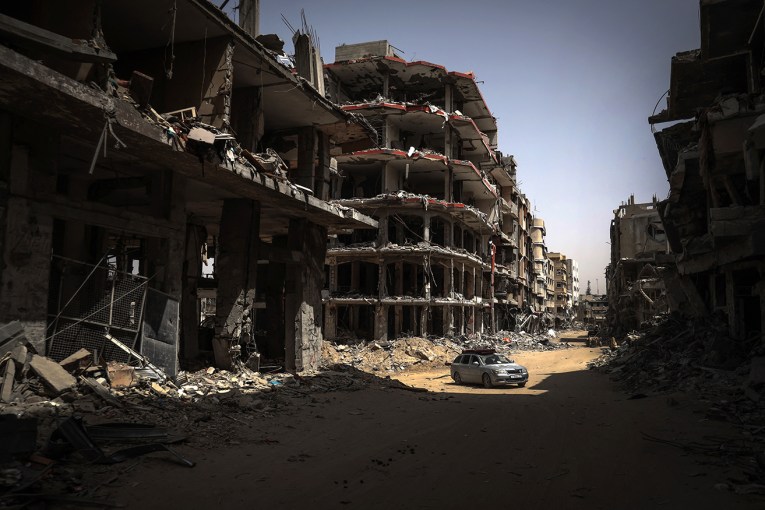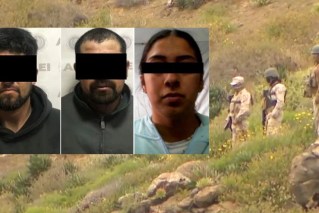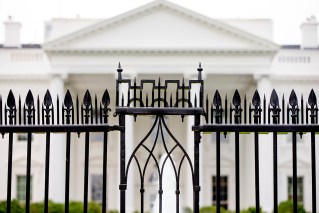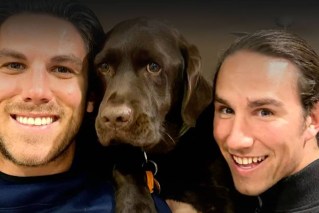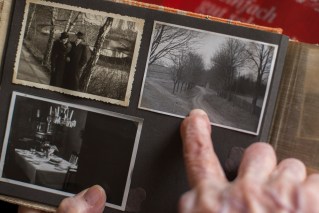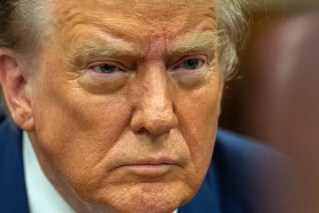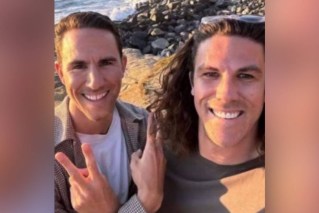Charles Manson was not the only horror of his time
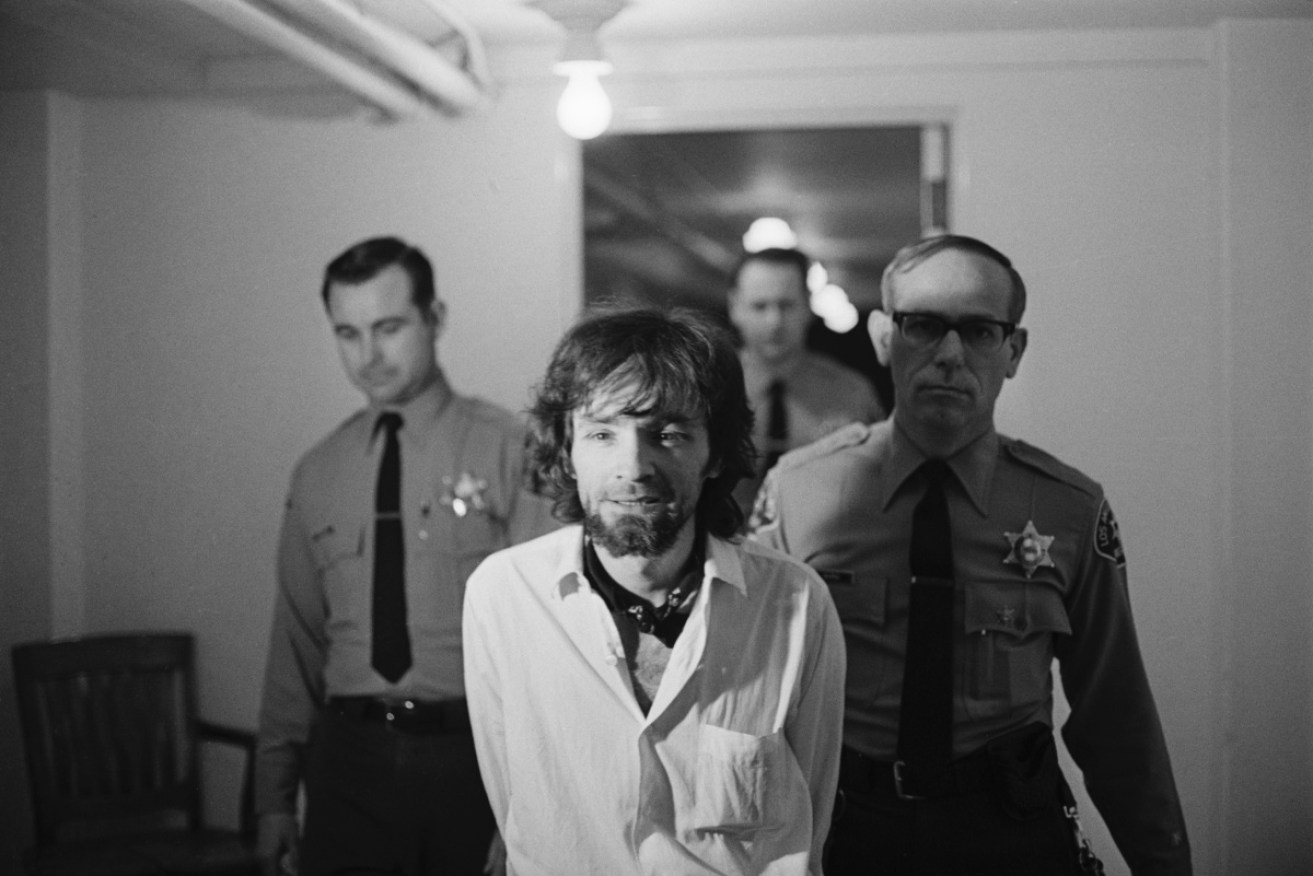
Charles Manson flanked by police at a 1971 court hearing. Photo: Getty
I get it. I was 17 at the time, lived no more than 20 minutes from the site of the most heinous of the killings, and it was a hell of a story — a story now being revisited 50 years later thanks in part to Quentin Tarantino’s new movie Once Upon a Time in Hollywood.
But does Tarantino’s timing represent anything more than marketing acumen? I’m not so sure.
In the script that is otherwise known as history, a soulless maniac named Charles Manson lured followers into his web of psychosis and then rained down bloody murder on unsuspecting victims.
Even more enticing for gawkers who follow such horrors, the worst of it took place in the Hollywood hills. And a lovely young actress named Sharon Tate, more than eight months pregnant, was stabbed 16 times.

Sharon Tate with director husband Roman Polanski on the 1967 set of Rosemary’s Baby. Photo: Getty
The notorious murders perpetrated by Manson and his ‘family’ spawned not just exhaustive news coverage at the time, but future books, movies and cultural churn aplenty.
The Beatles were famously drawn into the affair because Manson was said to have detected coded messages in their 1968 song Helter Skelter of a race war in which he and his clan would emerge from their dark hole and rule the remains of society (I defy you to find that message in the lyrics).
Shortly before his own death at the hands of a demented soul determined to impress another actress, John Lennon begged to differ, saying the song “has nothing to do with anything”.
Author Joan Didion saw a bigger picture, writing, “Many people I know in Los Angeles believe that the sixties ended abruptly on August 9, 1969.”
I was not one of them. True, from my vantage point of green youth in a nearby suburb, the media frenzy about Manson drowned out all the competition.
Even so, I wasn’t convinced that it was the darkest moment of the century, or even the decade. Without fully understanding it then, my response was tempered by the greater context.
My broader social awareness began with a thunderbolt in 1963 when I turned 11 and John F. Kennedy was assassinated in Dallas—followed just days later by the assassination of the assassin.
But that awful moment in history, memorialised in poignant photos of Jacqueline Kennedy in her blood-stained pink dress as Lyndon B. Johnson took the oath of office, was just the beginning.

Lyndon Johnson is sworn in as US President aboard Air Force One, watched by widowed Jacqueline Kennedy. Photo: Getty
The violent death of Jack’s brother Robert “Bobby” Kennedy followed in 1968, when he was shot repeatedly in a hotel kitchen after delivering a victory speech in California’s presidential primary.
In an example of cruel irony, Bobby had spoken just two months earlier with heartfelt reverence for Martin Luther King, felled by a sniper in Memphis, Tennessee.
In his inspiring speech, “On the Mindless Menace of Violence,” Kennedy posited that peace offered us a fuller, richer path to the future. How quaint it seems now.
Indeed the menace of his speech grew like wildfire in what became an era of violent, though arguably warranted, protests. Some of the worst were spurred by King’s untimely death.
But over the course of several years and in pursuit of many agendas, African Americans were being routinely being beaten and often killed as rioting spread from Birmingham to Philadelphia, on to New Jersey, Cleveland, Illinois, Detroit, New York, Michigan, Houston, Portland, Baltimore, Louisville, and on and on.
In 1965, from my home in a blindingly white suburb of LA, a friend and I watched from afar as smoke rose from the firestorm that was Watts. More than 30 died and 4,000 were arrested.

National Guardsmen sleep in the street after the Watts riots in August 1965. Photo: Getty
And let’s not forget Vietnam. One day, as required by law, I trudged reluctantly downtown to register with the draft board.
That evening, having dinner with my parents, I watched the evening news with its daily estimate of how many Americans had been killed or wounded that day. My visit to the draft board brought the grim body count into high focus.
That war catalysed more marches, which often devolved into more riots. I was only clubbed — just once when an officer came up behind me. But heads were cracked open, and lives lost.
Four students were shot by the National Guard on the campus of Kent State May 4, 1970. Two protesters died just 10 days later at Jackson State College. The apparent strategy was to kill our own people if necessary to protect the status quo of a war that should never have occurred.

A student hurls a tear gas canister back at military on Kent State University in May 1970. Photo: Getty
Oh, and the country was mired in a Cold War that threatened the nuclear destruction of us all. We were further divided into increasingly rabid factions by a President who seemed willing to set aside decency and the law to serve his own dark purposes. Imagine.
It was difficult at times to find solace from all this mayhem. In those days, one turned to music and, I confess, pot. A fair amount of it. But emotional minefields lay there as well.
Shootings, accidents, drug overdoses and suicides ripped stars off the stage with disturbing regularity: Patsy Cline, Dinah Washington, Sam Cooke, Brian Epstein, Otis Redding, Brian Jones, Jimi Hendrix, Janis Joplin, Jim Morrison, Duane Allman, Ron “Pigpen” McKernan (a gritty favourite). The list is shockingly long.
A common danger of writing a piece recalling a crime as despicable as Manson’s on a conveniently profitable date is to appear to glorify it. Worse, to celebrate it. And to some extent, to hail the perp. Isn’t that at least a bit of what happened even at the time of the crimes?
Manson was transformed into a celebrity of the dark side, and increasingly TV and filmmakers thrive on serving up despicable crimes as a jolly good time to be savoured by the whole family. How many sweet young women have met unspeakable deaths to kick off a new television series?
As heinous as his crimes were, did Manson stand at the top of the smouldering heap of violence and agita in the era of my youth?
Did I hang on every news report?
No, and not because I had no sympathy for those who were lost. But because mayhem and the din of chaos were increasingly a part of everyday life.

Police outside Sharon Tate’s house at 10050 Cielo Drive after the murders. Photo: Getty
So why do we revisit these events? Does it somehow provide a road map of our travels and, better yet, teach us how to improve ourselves? Wouldn’t it be nice to say, “Those were dangerous and demoralising times, but thank God we came to our senses”?
Did we? The evidence suggests no, not at all. The mayhem has not abated. Race riots still exist, though not in the numbers and not with the virulence that they did (yet), and white supremacists seem emboldened now to lead the way with their fists.
And when it comes to mass murder, Manson’s methods were crude and his choice of targets purposefully dramatic, but in terms of damage done, he’s got nothing on today’s killers, even from the “quiet kid next door who kept mostly to himself.”
As of early August in the US, there have been 255 mass shootings (defined as four or more killed). In case you’re keeping score, that’s a bit more than one per day.
When Didion’s friends suggested the sixties ended with Manson’s crime, I take it to mean that they believed an era of free thinking and free love had been brought to a horrible end. If my interpretation is correct, they were clearly mistaken.
Violence was woven into the fabric of that time. And Manson was just one of many ugly faces seemingly intent on kicking open the door to an increasingly violent future. Otherwise known, as now.
“No one — no matter where he lives or what he does — can be certain who will suffer from some senseless act of bloodshed,” Robert Kennedy said in that landmark speech just months before his assassination, adding: “And yet it goes on and on.”
- Robert Howe is a US-based journalist and editor who has previously held senior positions at The Washington Post and Time Inc. This is his first contribution to The New Daily.
